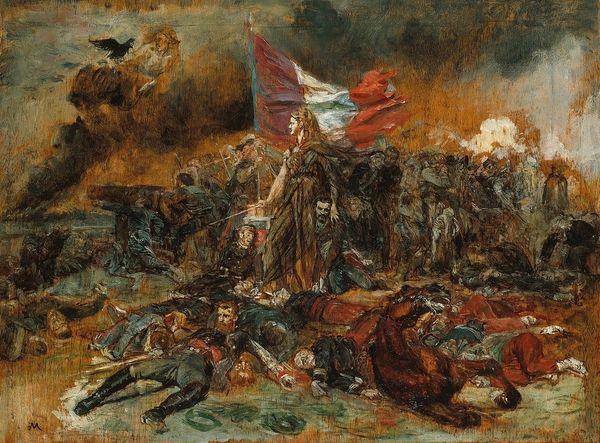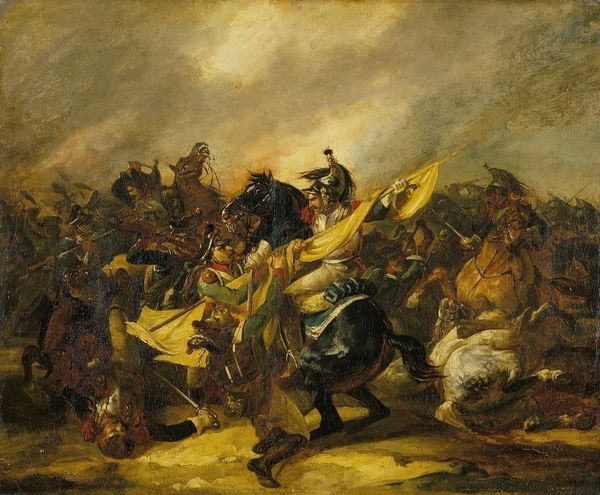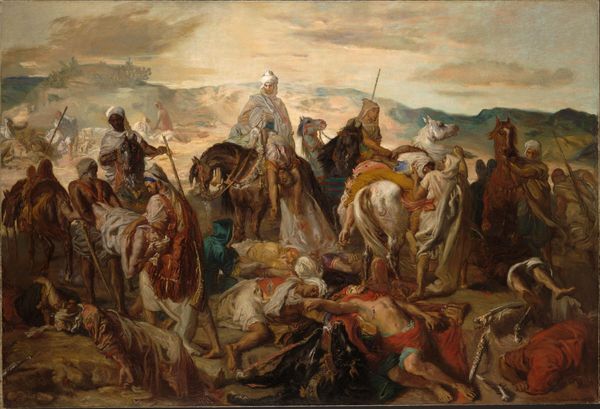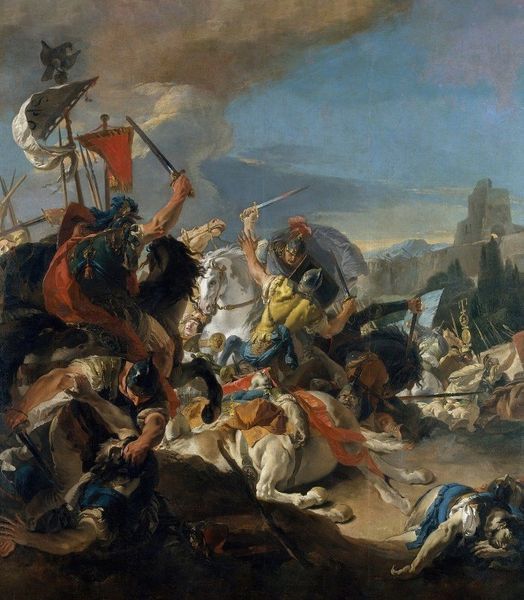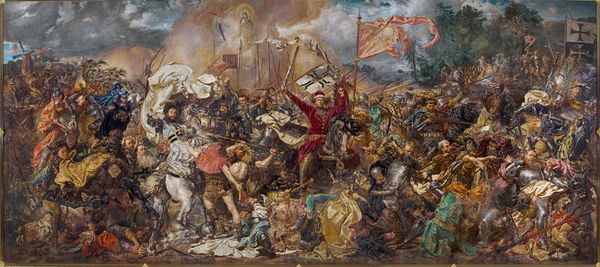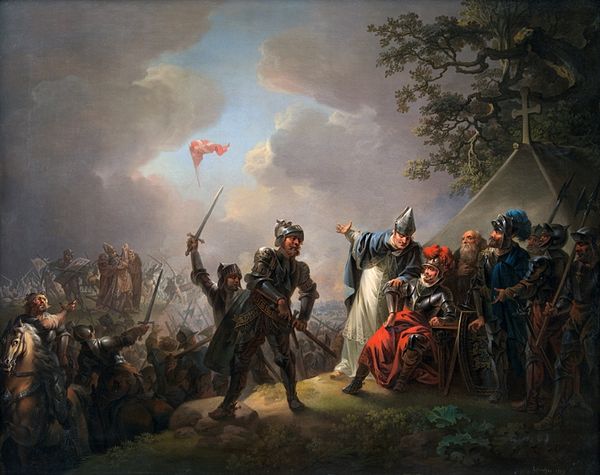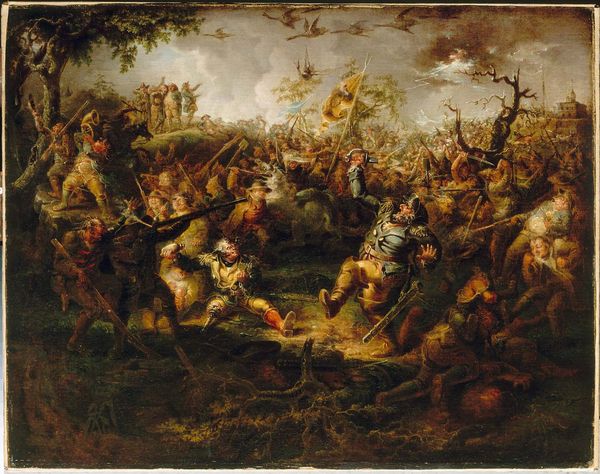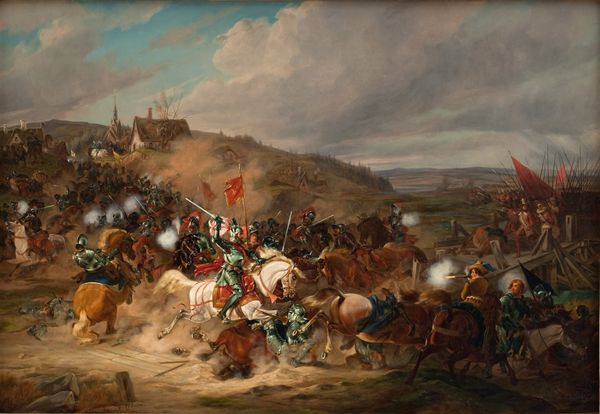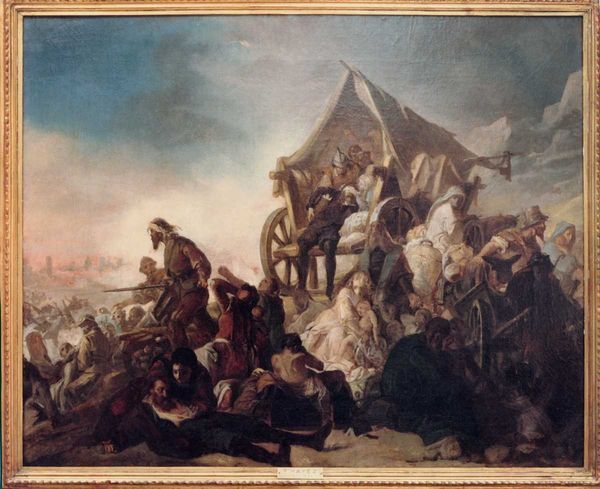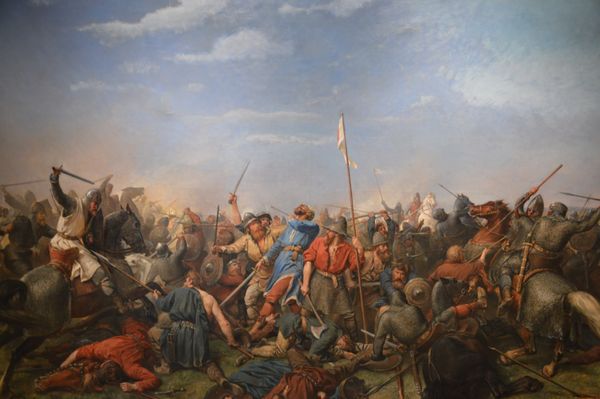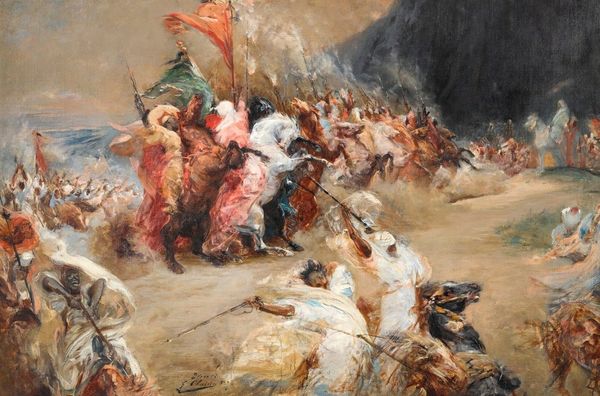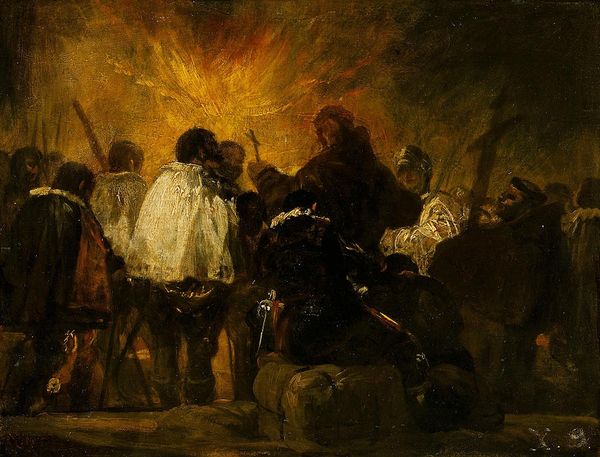
Jan III Sobieski Hands Canon Denhoff a Letter to the Pope with the Message of the Victory over the Turks at Vienna in 1683 1880
0:00
0:00
Copyright: Public Domain: Artvee
Editor: So this oil painting is called "Jan III Sobieski Hands Canon Denhoff a Letter to the Pope with the Message of the Victory over the Turks at Vienna in 1683," painted in 1880 by Jan Matejko. It's incredibly busy! There's so much going on – flags, horses, people – a real sense of movement. How do you interpret this work, especially given all its symbolic elements? Curator: It's a masterful piece of historical storytelling. Note how Matejko employs the visual language of victory: the raised flags, the commanding presence of Sobieski on horseback. But look closer, and you'll see more than just triumph. Notice how the delivered letter itself becomes a symbol. What does the act of giving, of relaying this victory to the Pope, signify to you? Editor: Well, immediately I see the power of the Church, how this military victory is, in some ways, validated or sanctioned by papal recognition. Curator: Precisely. The letter becomes a conduit, transferring the power of military might to the spiritual realm. And consider the subtle vulnerability of Sobieski in that moment of giving. He is a warrior, yes, but he seeks acknowledgement. The artist uses the cultural memory surrounding the battle, but it's layered. There’s pride, piety, but also the ever-present need for legitimization that rulers faced. The act enshrines Sobieski, yes, but is he free? Is it not a complex transaction? Editor: That's a fascinating point! I was initially focused on the immediate victory, but now I see the painting is exploring these longer-term power dynamics and how even a celebrated king must engage with established institutions. I didn't even notice all of those implications initially. Curator: It is precisely this visual language, that the painting itself is a document of history that helps us connect with its deep psychological currents. By making us consider its message, Matejko makes us consider history itself.
Comments
No comments
Be the first to comment and join the conversation on the ultimate creative platform.
